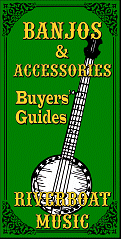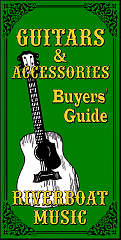


|


Shifter Autoharps
Note: This page is an archive, retained for the convenience of anyone who has bookmarked it in the past. The updated, corrected, and expanded version is now our "Shifter Autoharps" article at HarpersGuild.com
This article started out as part of our article "Mountain Music, Bluegrass, and Autoharps." That article traces the autoharps' historical relationship (or lack thereof) with string bands, including the Carter Family and their musical offspring.
The reason why I say "or lack thereof is that most string bands didn't use autoharps - the Carter Family is one of the exceptions. Because most autoharps built before the 1960s supported the flat keys used in popular piano and polka music better than they supported the sharp keys used by most string bands.
For decades, the vast majority of autoharps would only support playing in the keys of C and F. Even the 8-chord Model 72 7/8s that Sarah Carter played when they were starting out.
But Zimmerman company DID produce a line that would also play in G and D, and several minor keys. Though most of the line was discontinued before 1900, one model, the Model 6 was manufactured by the Phonoharp Company (then owners of the Autoharp brand) until about 1918.
This line used "shifters" as well as push-buttons to add more chords.
 I added a line drawing to the right so you could see the little levers you would push to engage the extra chords.
I added a line drawing to the right so you could see the little levers you would push to engage the extra chords.
I had read about these in Becky Blackley's The Autoharp Book. But the whole thing seemed a bit abstract until I acquired a "Model 6" cheap in an online auction because nobody knew what it was - plus it was obviously coming unglued in the back.
The Model 6 was exactly as Blackley had described. It would play up to 16 different chords. Each chord bar is equipped, not only with traditional felt blocks but also with little egg-shaped pieces of sheepskin or buckskin that are activated by the shifters. When you push down on a chord bar and push one of the shifters, the little "eggs" move sideways. Some move away from strings that are needed for the next chord. Some move up against strings that aren't needed for the next chord. Some do both.
As far as I can determine by Zimmerman's convoluted labeling system (shown below right), the Model 6 played 16 chords: C, F, Bb, G, D, A, G7, C7, D7, A7, Am, Gm, Dm, Em, Bm, and C#dim7. Which would make it the ONLY Autoharp I've ever had my hands on that played a diminished chord from the factory.
 |
 |
String Band Applications
According to Blackley, the first shifter autoharps was Model 3; it was introduced by 1893 and discontinued around 1898. Models 4, 5, and 6, were all introduced by 1889. The number of chords played by each went up with the model number.A, A7, Am, Em, Bm, C#dim7 |
One reason I started researching shifter autoharps it that I was told by someone I usually trust that Sarah Carter played one for a while. Squinting at old photos had led the person to believe that Sarah once played a Model 6 or something akin. But squinting at the same photos, I can find no definitive proof that Sarah ever owned a shifter autoharp. That's why I took this section out of the "Mountain Music, Bluegrass, and Autoharps" article.
 I've added a chart showing the modern names of the chords on the Model 6. Playing the instrument in your lap or on a table or stand, you would engage the chords listed on the middle row just by pushing the chord bar down, as you do on a modern autoharp. To engage the chords on the top row, you'd push the chord bar down and pull the "top" lever toward you. To engage the chords on the bottom row, you'd push the chord bar down and push the "lower" lever away from you.
I've added a chart showing the modern names of the chords on the Model 6. Playing the instrument in your lap or on a table or stand, you would engage the chords listed on the middle row just by pushing the chord bar down, as you do on a modern autoharp. To engage the chords on the top row, you'd push the chord bar down and pull the "top" lever toward you. To engage the chords on the bottom row, you'd push the chord bar down and push the "lower" lever away from you.
If the same product was available today, some Bluegrass players might consider it useful, because it plays most of the commonly used string-band-friendly keys. You couldn't play three-chord songs in Bb, A, or E. but it still offered much more flexibility than any of the push-button-only models.
Better yet, by offering Gm, Dm, Am, Em, and Bm, it gave you the option of playing in several minor keys, and playing many 4-and 5-chord songs in F, C, and G. And, yes, quite a few Bluegrass songs today use those other chords.
In other words, if you had one of these in working condition today, you could get quite a bit of use out of it in any typical Bluegrass, Mountain, Folk, or Country set.
On the other hand, these are all but impossible to play in the modern "upright" position. Not only is it it hard to push and pull the shifters with your left hand, the Model 6 is wider than standard autoharps - it's even hard for most people to reach and push the chord buttons.
There's a reason players are always shown with theirs in her lap or on a stand.
The Shifters Go Away, Along with the Key of D
Like many other overengineered projects, the shifter-equipped autoharps required more maintenance than was practical for an instrument being dragged out of the case night after night. In fact, models 3, 4, and 5, were never revived after the Autoharp brand changed hands in 1998/1999. The Model 6, which the Phonoharp Company revived about 1910, was discontinued about 1918.When the Oscar Schmidt company revived the Model 73 in 1932, the "shifter" autoharps had been discontinued for about 14 years. Consequently, the Model 73 had the honor of having more chords than any other autoharp in production at that time. It retained the Model 6's ability to play 3-chord songs in G, but it lost Em, Bm, and the ability to play 3-chord songs in D.
In fact, after the Model 6 went away, you couldn't get a commercially-built autoharp that could play 3-chord songs in the key of D until the 1960s.
If the Oscar Schmidt company had paid more attention to what autoharps were actually being used for after the Carter Family and their contemporaries put string bands on the radio, they might have sold a lot more instruments.
Conclusion
When life settles down, I may take a "whack" at restoring my Model 6, but due to it coming apart several places, I want to be especially careful not to cause more damage. Most people over the years have just screwed instruments of this age back together, and you can't see the screws from the front. It doesn't offend me that both of my model 2 3/4s (manufactured to different specs and 15 years apart) came to me that way - these are relatively easy to find, and not anywhere near as elaborate.But this is an exceptional and beautiful instrument that would probably still be in playing condition if it wasn't for the bad glue joints. I'd rather do it right, or have it done right.
In the meantime, please contact us with any questions at all - reader questions are the main thing that drivers our research, so we're always happy to hear from you.
Best of luck!
 Whatever else you get out of our pages, I hope you enjoy your music and figure out how to make enjoyable music for those around you as well.
Whatever else you get out of our pages, I hope you enjoy your music and figure out how to make enjoyable music for those around you as well.
And please stay in touch!
- Paul
![]()
![]()
![]()


![]()
![]()
![]()
![]()
http://CreekDontRise.com
http://SchoolOfTheRock.com
http://classictrainsongs.com
All materials, illustrations, and content on this web page are copyrighted (c) 2016 by Paul D. Race. All rights reserved.
Creek Dont' Rise(tm) is a participant in the Amazon Services LLC Associates Program, an affiliate advertising
program designed to provide a means for sites to earn advertising fees by advertising and linking to Amazon.com.
For questions, comments, suggestions, trouble reports, etc. about this page or this site, please contact us.
| Visit our other pages: | |||||
| - Music - | |||||

|
 |
 |

|

|

|

|

|

|

|

|

|

|

|

|

|

|

|
| - Trains and Hobbies - | |||||
 |

|

|  |
 |

|
| - Christmas Memories and Collectibles - | |||||
 |

|
 |

|
 |

|
| - Family Activities and Crafts - | |||||
 |

|

|

|

|

|